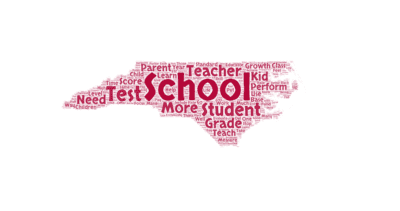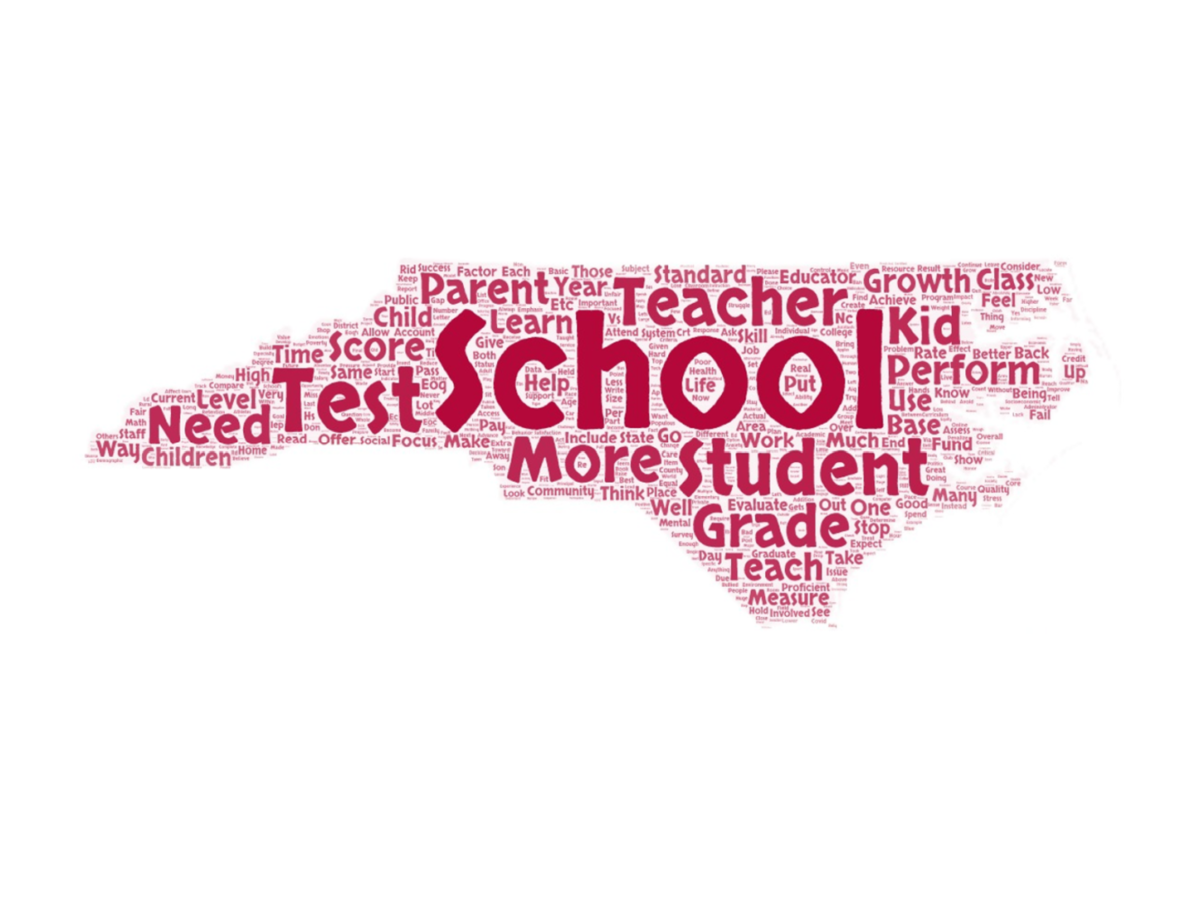
|
|
An advisory group working on North Carolina’s school performance grade redesign met on Monday, Dec. 12 and discussed a list of indicators that could become part of a new model to measure school quality.
In September 2022, the N.C. Department of Public Instruction (DPI) convened an advisory group to redesign the accountability model used to determine school performance grades ahead of the upcoming long session in the N.C. General Assembly. The group has met every month since September and will meet once more in January 2023. Lawmakers have the ultimate say on revamping the model.
During the last meeting, advisory group members collaborated to identify performance indicators they thought were most important to include in a new school performance grade model. Since then, state Department of Public Instruction (DPI) staff has looked through the indicators for areas of most, moderate, and least agreement by group members, as well as whether these indicators can be measured. Some indicators were ultimately removed, and some were grouped together.
At the start of this week’s meeting, Andrew Smith, assistant superintendent of innovation at DPI, went through the indicators and showed which were kept and which were removed.
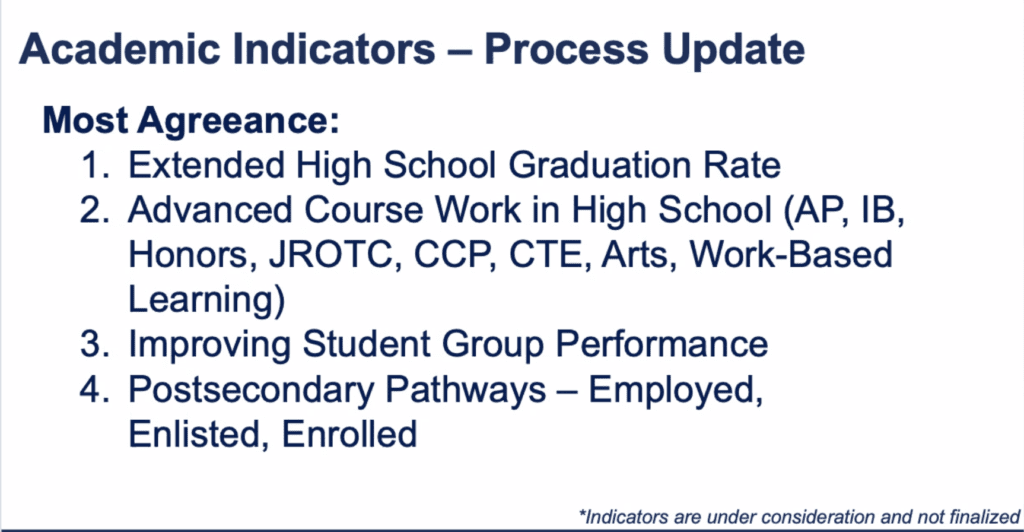
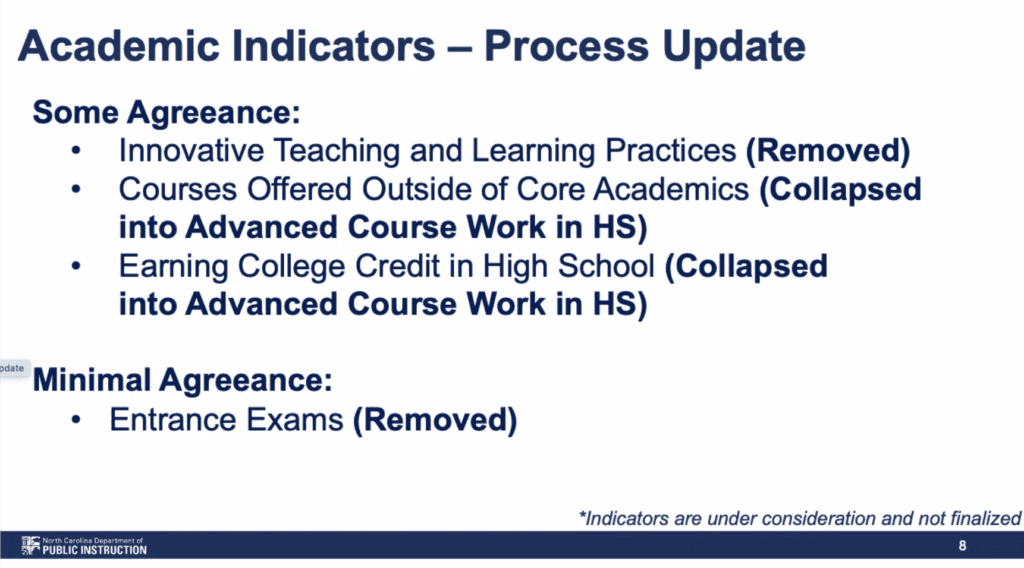
In the slide above, you can see that “Innovative Teaching and Learning Practices” was removed. Smith said this was because DPI staff didn’t think it could be accurately defined and measured.
At one point during the meeting, DPI Deputy Superintendent Michael Maher was asked if that one could be reconsidered, as innovative teaching and learning practices are one way that public schools can differentiate themselves from charter schools.
Maher said that might end up being part of the (optional) indicators that districts can choose to use.
DPI staff is recommending to the group that the new performance indicators be divided into two large chunks: by grade level — elementary, middle, and high schools — and by required and optional indicators.
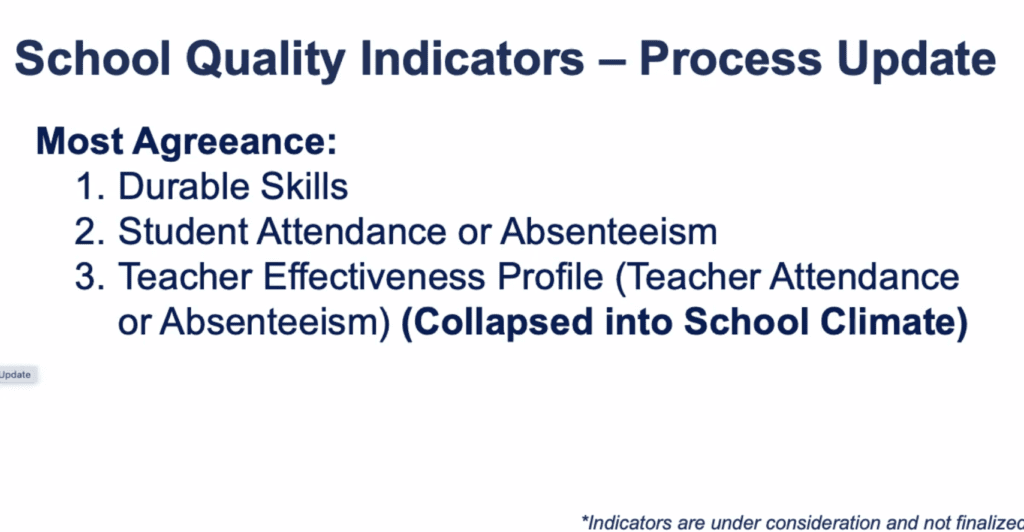
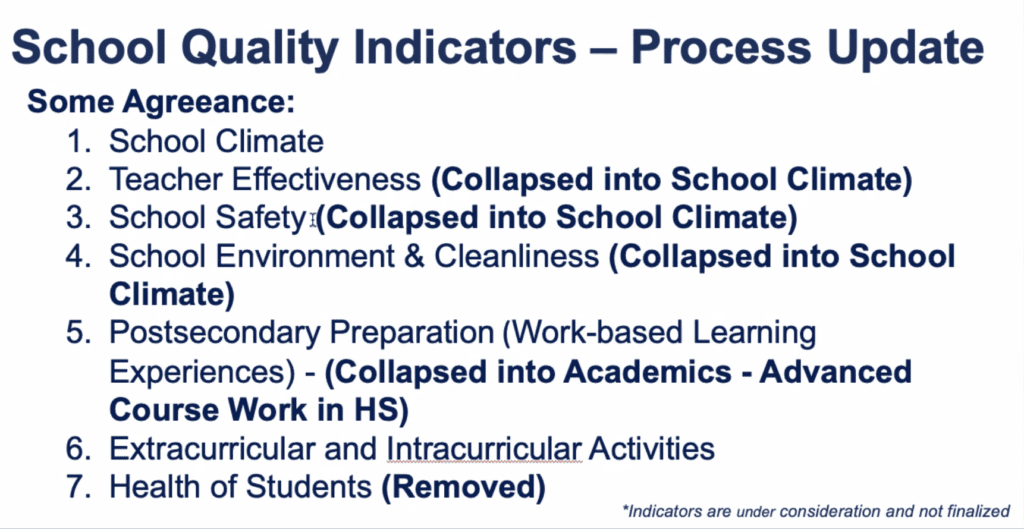
In the above slide, Smith said health of students was removed because of the difficulty schools have controlling this indicator and the difficulty measuring it.
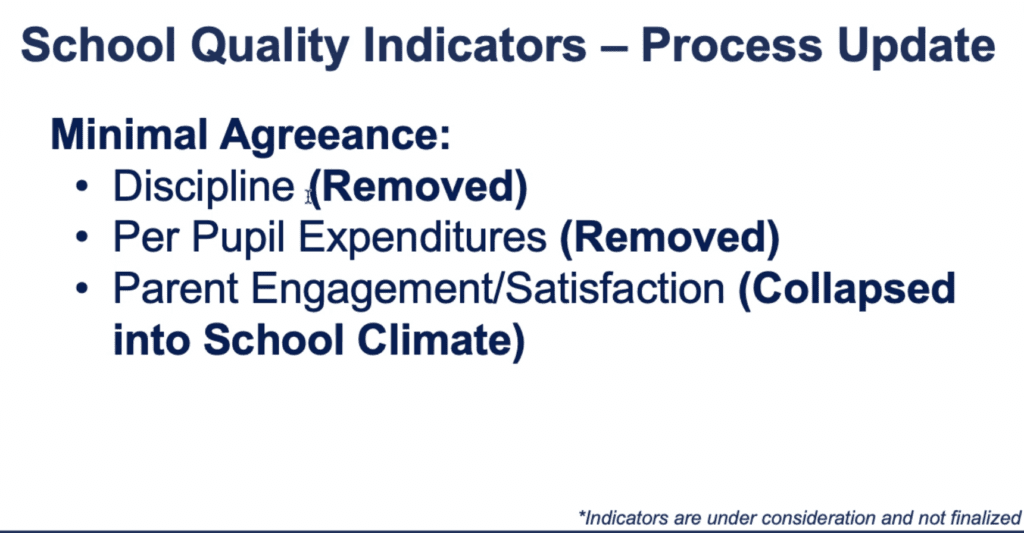
After the initial presentation of these slides, Maher took the group through them one by one for more general discussion.
The group also discussed how to weight the various categories of indicators.
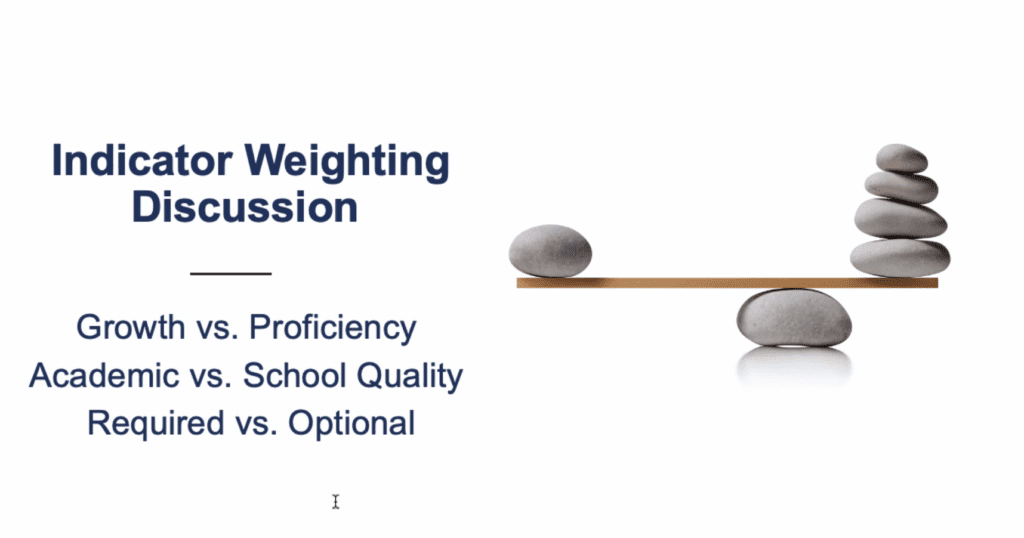
The current school grading system only considers two factors, academic performance and growth, and is weighted 80% by academic performance and 20% by academic growth. Group members agreed that the weight between academic performance and academic growth should change to be more equal.
State Superintendent Catherine Truitt questioned whether the group was looking for the indicators to ultimately form together into one letter grade for schools or if there would be more than one grade.
Maher said that he has been operating under the assumption that there would be one letter grade, based on a conversation he said he and Truitt had earlier in the year.
Truitt said she would be surprised if lawmakers were willing to have just one letter grade, particularly if there were changes to the weighting of academic growth and performance. She asked Maher to take that into consideration going forward and to come up with multiple models for the group to look at.
At the start of the meeting this week, Truitt said she thinks there is “broad consensus” on what a new model should look like and that the model under construction would reflect success better than the current one. She said, however, that unanimous approval isn’t possible.
“We’re not going to agree on every single element. There is very little chance of that happening,” she said, adding later to the group, “As we get closer to the long session, we’re so thankful for your support and advocacy of the model.”
DPI staff will continue to refine the indicators based on feedback from the group and will come back with a policy recommendation in January. Click here to read more about the members of the advisory group.




